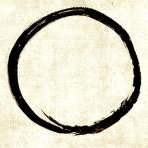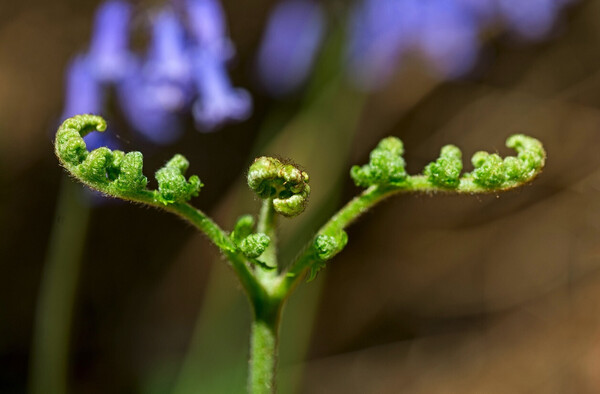-
Posts
380 -
Joined
-
Last visited
-
Days Won
1
Content Type
Profiles
Forums
Events
Store
Downloads
Gallery
Everything posted by FlorianB
-
Chris, the term warabite (i.e. young bracken sprouts) is used on different designs as a convention. Your example could be claimed warabite, personally I would prefer karakusa (arabesque). Fern sprouts in nature look like these: Some warabite designs taken from an old book with patterns of cloth: Here’s a Tsuba of mine, note the different number of forks: This vertical beam with rounded tips is also called warabite: And some other examples from tsuba.info (https://tsuba.info/higo/) with warabite design (or drawer handles on the left, temple gong on the right side...): Best, Florian .
-
No point to get confused. I like those stylized designs, because there are different interpretations possible. Which is right, which is wrong? At least it doesn’t matter because today we can only speculate about the maker’s intention. Try some research on the suggestions above and find the answer by yourself. BTW my Kiri leaf/seedling proposal is a nice idea, but it doesn’t correspond to Japanese iconography. Meanwhile I think about matsukawabishi and warabite, often found on Shoami Tsuba - sorry to confuse You even more! Best, Florian
-
Possibly. At least every sukashi could be used as udenuki-ana... My recommendation to Okan (?): Research Tosho- and Katchushi Tsuba to get a feeling for the simplified or abstract designs. Maybe You get the answer by yourself. Florian
-
That’s the design I reminded. Another one here with peaky leaves: copied from this site: https://tosogucollection.wordpress.com/2014/05/12/iron-tsuba-with-design-of-paulownia-leaves/ Akasaka and Higo often produced similar designs. However, this means Kiri leaves AND warabite? Or another proposal: kiri leaves and kiri seedlings like this one: It is said, it is a very fast growing tree. Florian
-
The jagged leaves reminded me first of kiri-leaves sometimes made by Akasaka, but the shoots won't fit. So at least I agree with the fern option. Florian
-
I vote for some kind of insect, a bug or a butterfly. Florian
-
Something else to think about - I've seen some kind of soft-coral from southern Japan. I'm not a coral expert, but a research on this topic might be helpful. Best, Florian
-
Concerning the second one in question I found a similar one here: https://soryu.pl/collections/tsuba/products/kanayama-tsuba-with-nbthk-hozon-tosogu-cross-and-wild-geese BTW the term "cross" is not necessarily connected with a christian cross. Florian
-
So at least some more shots in an angular view would be helpful so we could see the rim and the inner sides of the sukashi. Florian
-
Agreed, Dale! Alas we can only judge by images. It’ll become clearer holding those pieces in hand. As I mentioned above the large seppa-dai on Dan’s Tsuba seems a clue to Shoami. Concerning the karigane it is said Owari often made curled wings, Shoami wings are slightly bend. Florian
-
Dale, actually it is the first I see with mokko-gata. Thanks for posting. The Akasaka attribution is encircled: BTW, the rusty one on the Japanese sales page is described as "Ko Shoami". Florian
-
Hello Dan, it looks not like Akasaka. As far as I remember they never made mokko-gata. Large seppa-dai and the symmetrical design - in my opinion here we have Shoami again, probably Edo because of the lack of displacement of centre lines. Best, Florian
-
Hi, thickness and a small, pointed seppadai alone aren’t sufficent for a Ko-Akasaka attribution. Not even the size but also the shape of the hitsu ana are non-typical. In general I can’t see even Akasaka here. Concerning the motif there are different leaves depicted, at the bottom maybe myoga, the sharp angeled sukashi elements could be broken bamboo stems, at the top juzuba, a buddhist rosary. Just a quick shot in the dark. A look at Japanese heraldy (kamon) is often helpful for identifying stylised design. Best, Florian
-
Looks like an old Tokubetsu Kicho paper (replaced by Hozon paper in 1982). Example with explanation here: http://www.nihontocraft.com/japanese_sword_papers.html Best, Florian
-
Ed, In my view the surface structure is result of corrosion. It seems that parts are laquered? Those tagane on the back in groups of five could be found on Shoami and Kanayama pieces, neatly done here. Similar to one of mine: Dimensions could help to pin down the origin, but Shoami seems most likely. Florian
-
Sure it's painted? Looks more like a plastic label with a number on it... Florian
-
An old thread with similar examples: Best, Florian
-
Hi, the lower motif in question shows gourds. Alas, the condition isn't the best. Concerning the signatures on Kogatana there are some which certainly are genuine (and thus made by the named smith), but in many cases these designations just refer to a well known smith. Best, Florian
-
Hi, what do you mean - raining swordblades? Or simply the proportions of the tiger, made by someone who'd never seen one? Florian
-
In my opinion a real daisho should be different in size and corresponding (not necessarily identical) in design, so you can see the artist’s intention in creating the pair. Often a popular design was routinely repeated over and over by tsubako and, as said above, in later times similar ones where put together by dealers to increase the value. Thus often seen in western collections. Florian
-
The noted tapering at the edge is typical for later Tosho-style works, the circle is too exact and the carving on the butterfly is unusual for old examples, so my gut feeling tends to a later reminiscence from Edo. However an impressive work. I like it. Florian
-
Hello Greve (?), on the first sight it seems to be an interesting Tsuba, well done with elegant curves in orikaeshi mimi. I like it. I don’t think, the corners depict Mount Fuji (there should be three peaks). I would describe it as a variation of itomaki-gata. The indentation could be called sumi-iri. Concerning the manji- or sawastika-mon no apologies needed - we all know the meaning of it in Japan. If the mon refer to specific families or if they are just decoration I can’t tell, but in my opinion these inlays have a kind of crudeness in workmanship. Perhaps later additions? Best, Florian















